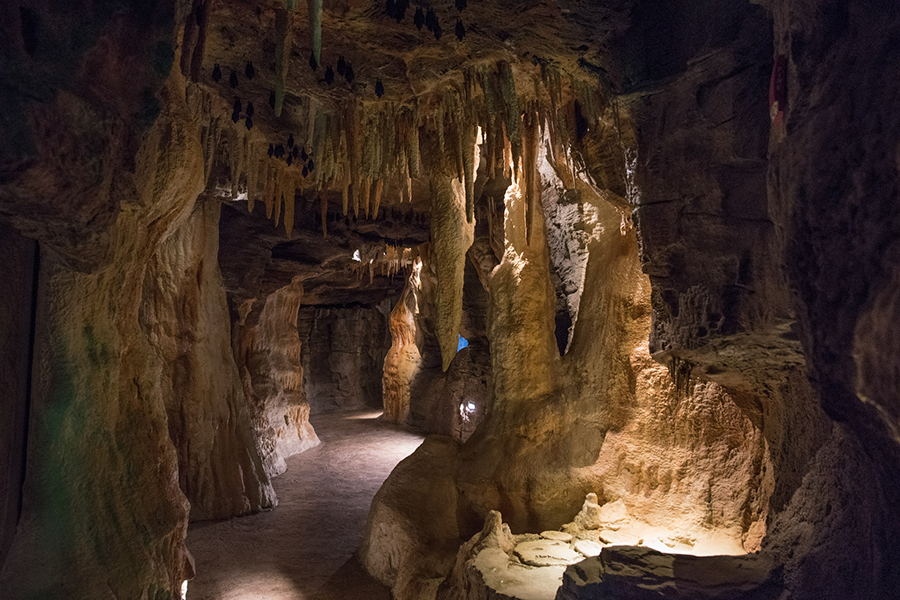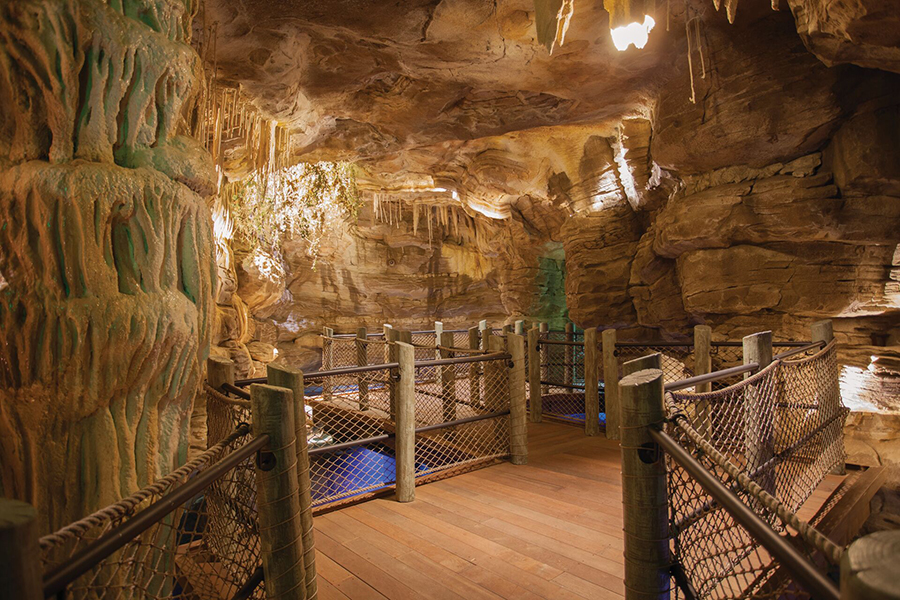
About the Exhibit
Missouri didn’t earn the nickname “The Cave State” by accident. With nearly 6,400 documented caves, and likely more still waiting to be discovered, this region is home to one of the most unique and fragile ecosystems on Earth. Beneath the surface lies a world shaped over millions of years, full of life that has adapted in remarkable ways.
As you explore these underground environments, you’ll encounter creatures that seem almost otherworldly. Take, for example, the Mexican Blind Cave Fish, born without functioning eyes yet perfectly equipped to thrive in total darkness. These fish rely on an enhanced lateral line system, which allows them to sense the slightest vibrations and movements in the water around them. It’s like navigating through touch rather than sight.
Closer to home, here in the Ozarks, we have our own blind cave fish that play a fascinating role in the cave food web. They depend heavily on another cave-dwelling species: bats. More specifically, bat guano (droppings) provides essential nutrients that help sustain life in these pitch-black environments.
Bats have their own superpower called echolocation. They emit high-frequency sound waves that bounce off nearby objects, painting an acoustic map of their surroundings. This natural sonar helps them avoid obstacles and locate insects in total darkness. While WOW’s bat species do not possess this trait, many other bat species worldwide rely on this phenomenal ability to navigate the complex cave systems.
But bats are in trouble. Across North America, many populations are declining due to a devastating disease called White-nose Syndrome (WNS). Caused by a cold-loving fungus, WNS gets its name from the visible white growth that appears on a bat’s nose and wings. The disease disrupts hibernation by causing itching and irritation, forcing bats to wake up and burn through their stored fat far too quickly. Many don’t survive the winter. While WNS is believed to spread mostly from bat to bat, humans can unknowingly contribute by carrying fungal spores on clothing or gear into caves. That’s why responsible cave exploration — and awareness — is so critical.
Beyond the animals, caves themselves are delicate and vital parts of the landscape, especially in regions like the Ozarks and Appalachians. These underground systems are directly tied to the quality of groundwater, making them essential not just for wildlife, but for people, too. Protecting them means protecting the larger environment.
Thankfully, here in Missouri, efforts are ongoing. The Department of Natural Resources and the Department of Conservation work hand-in-hand to preserve our caves through research, regulation, and public education. On a broader scale, Wonders of Wildlife partners with the Izaak Walton League of America, a conservation group that empowers citizen scientists to monitor and protect local waterways, further connecting us to these underground ecosystems.

When you’re ready, continue your journey along the boardwalk to discover the cave’s natural artistry: towering stalagmites, hanging stalactites, slender soda straws, and unique features like cave pearls and the bacon-like ripples of mineral-rich flowstone. Every formation tells a story of time, water, and mineral magic — quietly building this subterranean world drop by drop.
You can also check out Wonders of Wildlife’s sister properties, Dogwood Canyon Nature Park and Top of the Rock Ozarks Heritage Preserve, to explore some of the Ozarks’ many caves!
